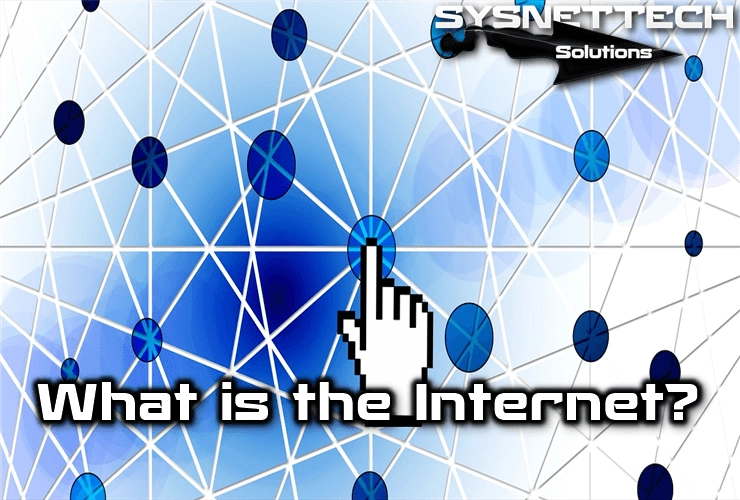The Internet is a bunch of computer networks joined together. So, it lets computers talk to each other directly.

What is an Internet Network? What is its development and history?
The term generally refers to a connection that is planetary and public, connecting computer networks of governmental, educational, and commercial organizations. However, smaller network systems also exist, typically for use by a single organization. These systems are often called “Intranets“.
Internet technology contributes to universal knowledge by providing access to schools, libraries, businesses, and households. Therefore, it is a super data source that is a theoretical computer communication target.
What is Internet History?
During the Cold War, the Soviet Union got noticed by sending Sputnik 1 into space on October 4, 1957. Since the conception of the North American communications network, a crisis of anxiety has erupted in the US military command. However, it was vulnerable to the possible breaking of a link due to the occurrence and introduction of the Soviet offensive.
This was born to prepare a new communication system that could not crash before any of its nodes were cut.
After the collapse of the Soviet Union, the response to the collapse of the central node of the network slowed down. An actual demonstration only came with the attacks of September 11, 2001. During this time, no significant reactions were observed.
Internet Protocol (IP) and Transmission Control Protocol (TCP) are two great standardizations. American computer scientist Vinton Cerf and engineer Robert Kahn developed them in 1973. Subsequently, this project was supported by the Advanced Research Programs Agency (ARPA).
Internet networking began with an ARPA computer network called Arpanet. This network connected universities and research laboratories across the United States.
The World Wide Web was made by a British computer scientist named Timothy Berners-Lee for the European Council for Nuclear Research (CERN) in 1989.
How Does the Internet Work?
An internet network is a set of local networks connected through a dedicated computer for each network, known as a gateway.
Interconnections between gateways are accomplished through a variety of communication channels, including phone lines, fiber optics, and radio links.
Additional networks can be created by connecting new devices. Information to be sent to a remote machine is tagged with that machine’s computerized address.
The Internet network offers various services, and each one uses its type of address called an Internet Address.
One format is known as dotted decimal, e.g. 145.95.34.22.
Another format describes the name of the target computer and other information for redirection, e.g., “www.sysnettechsolutions.com.”
Networks may use suffixes that indicate the country, for example, for USA (.us).
Suffixes can also identify the type of organization to which the computer network in question belongs. It could be an educational institution (.edu), a military center (.mil), a government agency (.gov), or a nonprofit organization (.org).
Information is routed from router to router until it reaches the local network containing the target machine. Because the Internet network has no central control, there is no individual computer directing the flow of information.
This distinguishes the Internet and similar network systems from other computer network services such as CompuServe, America Online, or Microsoft Network.
What is Internet Network Protocol?
IP is the essential software used to control the network system. This protocol shows how gateway computers send information from one computer to another.
Another protocol called Transmission Control Protocol (TCP) checks whether the information reaches the destination computer or causes it to be resent.
What are Internet Services?
Network systems, such as the Internet network, allow information to be exchanged between computers, and numerous services have already been created that take advantage of this functionality. These;
1) Telnet
It allows you to connect to a computer from another location. You can consult Databases or access library catalogs via Telnet.
Once the connection is established through this service, the computer acts as another terminal of the remote computer. So it can run all its applications.
2) FTP
It allows file transfer between the local computer and the remote computer. FTP servers are shared files where files can be stored and other files can be removed.
3) Gopher
It allows you to read and interpret files on remote computers. It is a simple system that facilitates access to Internet resources through menus.
The newest and most crucial Internet network service, the grandchild of the Gopher service, is HTTP (Hypertext Transfer Protocol).
HTTP can read and interpret not only text, image, audio, or video data but also files on a machine.
HTTP is the information transfer protocol that forms the basis of distributed information collection.
4) World Wide Web
The web or WWW supports information in the form of text, graphics, audio, and video. This creates a collection of files for Web locations or Web pages that contain links to other files.
Files are identified by a universal resource locator (URL) that specifies the transfer protocol, the machine’s Internet network address, and the file name.
Computer programs called browsers, Google Chrome, Mozilla Firefox, or Microsoft Explorer use the HTTP or HTTPS protocol to retrieve these files.
New types of files are constantly being developed for the WWW, such as animation or virtual reality (VRML). Until recently, readers had to be specifically programmed to handle each new file type.
New programming languages allow browsers to load utilities that can manipulate these new types of information.
5) Electronic Messaging (Email)
It is one of the most versatile means of communication between people in the Internet network environment. It allows users to send network messages directly and almost instantly, regardless of the distances separating them.
They are systems that allow the distribution of messages to a group of people interested in a particular topic. Lists can be managed from a central server or controlled publicly or privately.
Talk, IRC (Internet Relay Chat), allows direct communication between two or more people connected to the network. It can be counterproductive when used for non-essential things. Its maximum expression is video conferences that allow visual and vocal contact of participants.
What are Internet Network Connection Types?
1) RTC (Switched Telephone Network)
Also known as the Basic Telephone Network (RTB), it is the original and regular analog network. The connection is made using an ISDN call.
2) ISDN (Integrated Services Digital Network)
It sends information digitally encoded. Therefore, a network adapter, modem, or ISDN card is required to adjust the speed between the PC and the line.
3) ADSL (Asymmetric Digital Subscriber Line)
It is a technology that relies on the copper pair of the standard telephone line and turns it into a high-speed line. It allows voice and data to be transmitted simultaneously over the same phone line.
4) Satellite
In recent years, more and more companies have been using this transmission system to distribute.
5) Wireless Networks
It is a technology standardized by IEEE that allows local networks to be mounted without using infrared or radiofrequency waves—for example, Wi-Fi, Li-Fi, and the 2016 Loon Project.
6) LMDS (Local Multipoint Distribution System)
It is a point-to-multipoint communication system that uses radio waves at high frequencies, around 28 or 40 GHz. Transmitted signals can consist of voice, data, Internet, and video.
What are the Social Impacts?
Although most of the population does not have Internet network access, computer interaction is still in its infancy. This has changed the world significantly, breaking down the barriers of time and distance. This way, people can share information and work together.
Progress towards the information superhighway will continue at a faster pace. The available content is increasing, making it easier to find any information on the Internet.
New applications will enable economic transactions to be carried out safely and offer new opportunities for trade.
Fancy new stuff will make information move faster. This may enable direct transfer of free time.
Special broadcasts may replace existing public television broadcasts. Each household can watch signals tailored to their taste.
Censorship Act
The increase in web pages that malign the minority, promote racism, or contain pornographic materials attracted attention. This has led to calls for Internet providers to meet specific criteria.
In 1996, the Communications Interception Act was passed in the United States. This law made it a crime to transmit indecent material.
The decision sparked a backlash in favor of civil liberties opposing censorship. Users, industry experts, and groups quickly reacted with outrage. The law was challenged and suspended by a committee of federal judges in June 1996.
The committee described the Internet network structure as a planetary conversation. Therefore, it deserves maximum protection against government interference.
Many network services may have established mechanisms in countries such as the United States. However, it cannot constantly monitor people’s activities on the Internet through servers. In short, their ability to control what they say is limited.
Legal issues arise when dealing with information from other countries. Even if supranational control is possible, global criteria of conduct and ethics must be established.
The US government aims to break some countries’ Internet restrictions. Thus, it can block destabilizing messages from outside. This is part of their strategy to protect their sovereignty.
Conclusion
In addition to the question of what an internet network is, I would like to summarize all its features. In summary, the Internet has evolved from the Cold War-era communication system. As a result of this evolution, it has become a global network connecting people, information, and services around the world.
Its development and history reflect the joint efforts of scientists and engineers. These efforts are aimed at creating genuinely groundbreaking technology.
As we continue to depend on the Internet for contact, commerce, and entertainment, it is important to remember its humble beginnings. We should also not forget its extraordinary journey, which has led to its ubiquity in our lives today.



